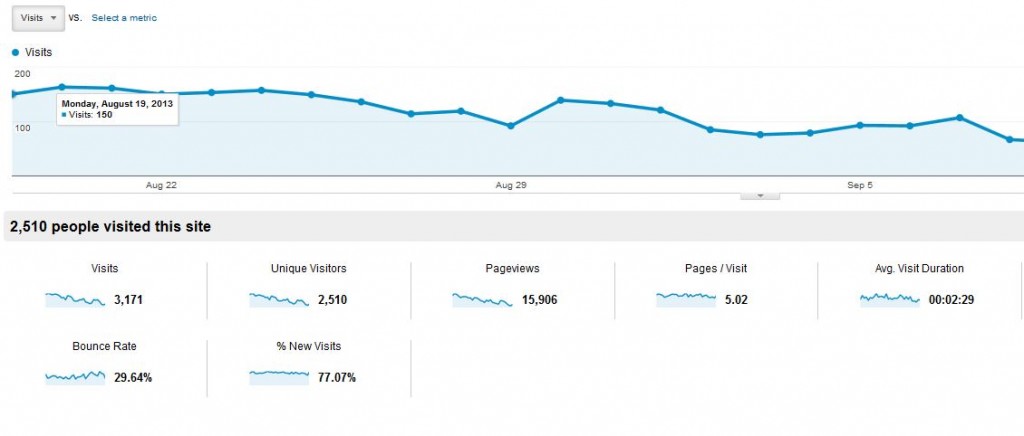
From the cornfield of Kevin Costner’s Field of Dreams came the voice: “If you build it, they will come.”
So. like so many entrepreneurs, Costner’s character Ray Kinsella set about building it—and they came:his father, the ghosts of baseball legends, and a stream of cars flocking to the picturesque ball field he nearly went into foreclosure to build.
Business websites are like the Field of Dreams. Large or small, they’re developed with a common goal: to attract as many visitors as possible to either sell more products, supplement an organization’s sales process, or share information.
However, unlike a flock of baseball enthusiasts purchasing a ticket to watch a baseball game, all website visitors are not created equal. Revenue requires action, which is driven by creating a perception of value that is the result of engagement.
So the question is this: should you focus on engaging the random visitor or attracting the visitor who will be engaged? There is a difference, and it comes down to the old rule of knowing your customer.
Bounce rate is a great measurement to analyze how well you’re targeting the right visitors. It identifies the “land-and-leavers” by tracking the percentage of site visitors that go to only one page before exiting a site. According to Google, the average bounce rate for U.S. websites is 42.5 percent.

Determining your bounce rate is easy—and free
Your bounce rate will be available in most website analytics reports. Google Analytics is free and easy to install on your website. (Here’s a tutorial on how to set up Google Analytics on your website.)
You want your bounce rate to be low. This is especially true if you are paying to drive traffic to your site. In fact, bounce rate is often the point of disconnect between website owners and the search engine optimization firms they hire to help them.
The SEO company will point to traffic and say: “we’ve increased traffic to your site by an average of 200 visitors a day.”
To which the business owner responds: “But I’m losing more money than I’m making.? And neither is wrong, but the finger pointing ensues and trust erodes.”
Bounce rate ultimately measures engagement. Is your site relevant to the visitors you want to attract and does it provide them with the information they need to take action? If the answer is no, then you need to focus on making your website better meet the needs of your prospective clients.
Keys to lowering your bounce rate
Here are five things the BrandSprouter team focuses on to improve bounce rate and generate more conversions.
- Onsite search engine optimization. Make sure your page titles, heading tags, and content are SEO-friendly and contain the right keywords.
- Usability. Your site needs to be easy to navigate and contain well-placed links that point to relevant information on other pages of your site.
- Value. The importance of on target, well-written content cannot be overstated, so focus on helping web site visitors find an answer or solution to whatever their needs may be, whether it is a product, service, or information.
- Mix it up. Drop in a video here and there, blog, offer live chat. All of these things help engage website visitors. Don’t let your website become too static.
- Be sexy. Yes, looks matter. The internet was once popularly referred to as the information superhighway for a reason—lots of traffic moving at a fast pace. Your website is your billboard along this highway, and it can pass as a blur at the side of the road if it’s not well designed.
Bounce rate is one tool of many for measuring website effectiveness
Bounce rate is not the be-all and end-all of website analytics. It is just one tool in the website benchmarking toolbox.
As a general rule, you should understand the impact of your website bounce rate and how it affects you achieving your goals.
Keep in mind, different sites will and should view bounce rate differently. For example, if you are a coupon-oriented website, a high bounce rate is very likely. You want people to find your relevant page in a search then click your offer. So conversions are a more valuable metric. However, if your site is designed to augment your sales process by providing detailed information about your products and services, achieving a low bounce rate is very important. You want people navigating across your site for more information.
The important thing to remember is that not all traffic is created equal. Also remember that a website is grounded in reality. If you build it, visitors will not come—at least not by chance. You need a strategic plan for generating traffic—the right kind of traffic—that will engage new and existing customers in a way that helps drive revenue. Otherwise you?ll be like Ray Kinsella in Field of Dreams, telling all those you know and who care about your business that “I was just talking to the cornfield.”
